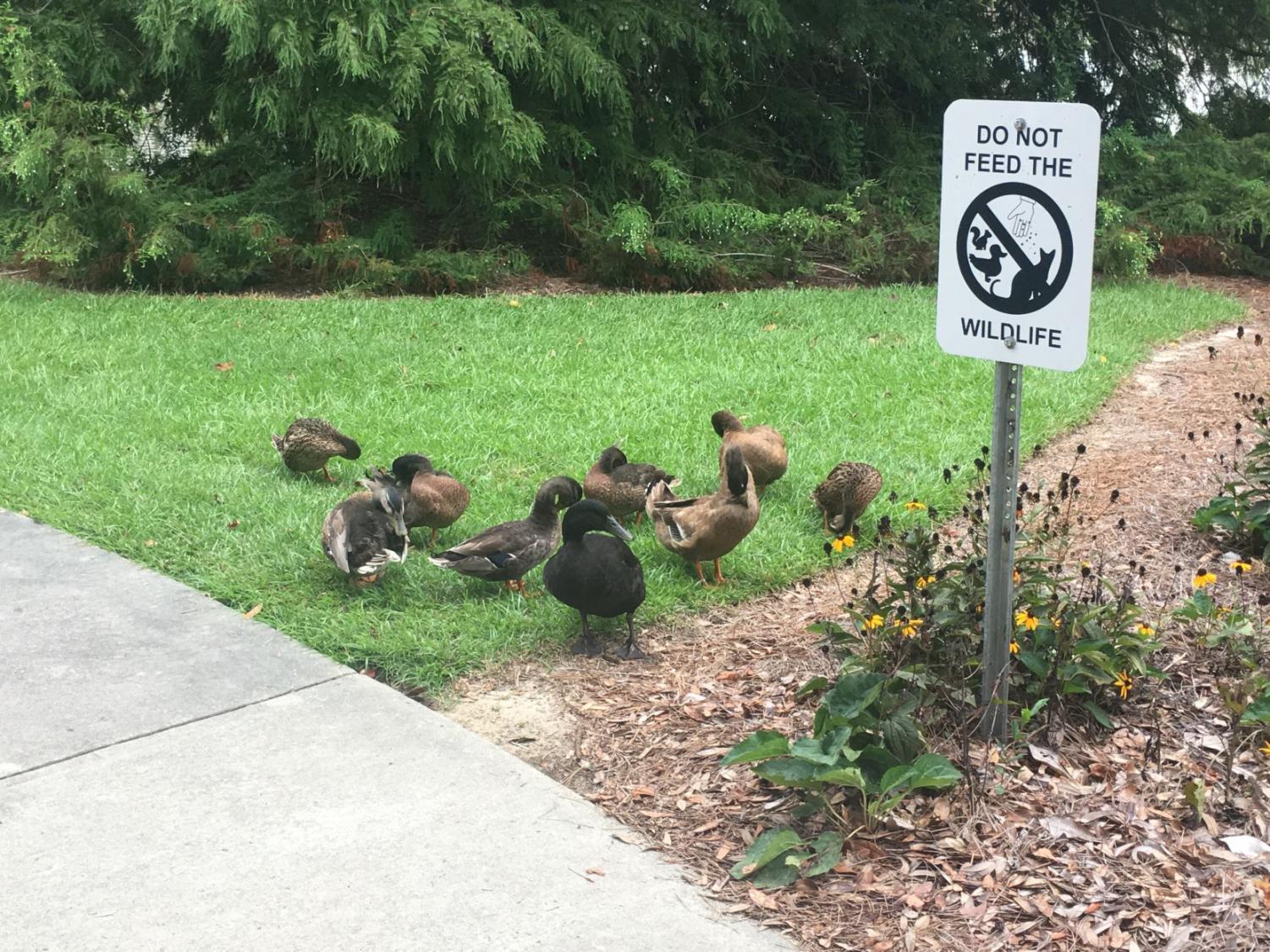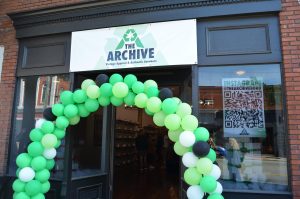Feeding the ducks and geese is harmful to their health
August 23, 2017
Students, faculty and staff may want to think twice before feeding bread, popcorn or crackers to the ducks and geese on campus as multiple sources say artificial feeding is harmful to their health and may even disfigure them.
Most people can recall a childhood memory where they took a trip to a local park, pond or lake to feed ducks or geese. This activity is entertaining to some, relaxing to others and may seem harmless, but according to the Humane Society of the United States, this practice does more harm than good.
The most common food item fed to waterfowl is white bread, which is low in nutritional value, containing 14.8 grams of carbs, no vitamins and almost no minerals. Popcorn and saltine crackers are also common, and they contain six and 12 grams of carbs, respectively, no vitamins and almost no minerals.
“While kids can get away with eating junk food once in a while, young birds can’t,” an article from the HS’s Kind News Magazine reads. “Without proper nutrition, problems occur. What they eat each and every day is very important to their proper growth.”
Angel wing deformity
If young waterfowl frequently consume an excessive amount of carbohydrates, they may develop a condition known as “angel wing.” This deformity disfigures the waterfowl’s joints and causes feathers on one or both of their wings to twist outward, stripping the birds of their ability to fly.
Waterfowl that cannot fly are unable to migrate, and they can’t easily escape predators or find food. The condition can be treated and cured while waterfowl are still young – however, once they have matured into an adult, treatment is hopeless.
“In adult wild birds, the disease is incurable and usually leads to an early death as affected birds are rendered effectively or totally flightless,” reads an AvianWeb LLC article.
Junk food dependence
Not only can artificially feeding waterfowl send them to an early grave, but it can also make them dependent on human food.
During a brutal Connecticut winter in the early 1990s, 30 swans at an artificial feeding site perished from starvation because they could not find any natural food, and thus could not survive the winter. Yet not far away, more than 800 swans living in a natural environment managed to survive.
Disease, illness and artificial feeding
The New York Department of Environmental Conservation says the majority of waterfowl deaths within the past 10 years have involved artificial feeding. According to their article entitled Stop Feeding Waterfowl, “when ducks and geese feed on scattered corn or bread, they eat in the same place where they defecate,” which contributes to the spread of disease in animals.
The article also cites an instance where hundreds of ducks were killed due to an outbreak of Avian Botulism at an artificial feeding site. An ordinance banning the feeding of waterfowl was later implemented.
Even humans are not safe from the harmful effects of artificial feeding. The NYDEC also notes an instance where swimmers in Skaneateles, N.Y. contracted a condition known as “Swimmer’s Itch”, which is caused by a parasite emitted from “ducks attracted to artificial feeding.”
What can you do to protect yourself and the waterfowl?
The NYDEC has a simple solution.
“Clearly, you do not need to feed waterfowl in order to enjoy them,” their article reads. “In fact, it should be apparent now that the best thing you can do for the overall benefit of waterfowl is to stop artificial feeding.”







